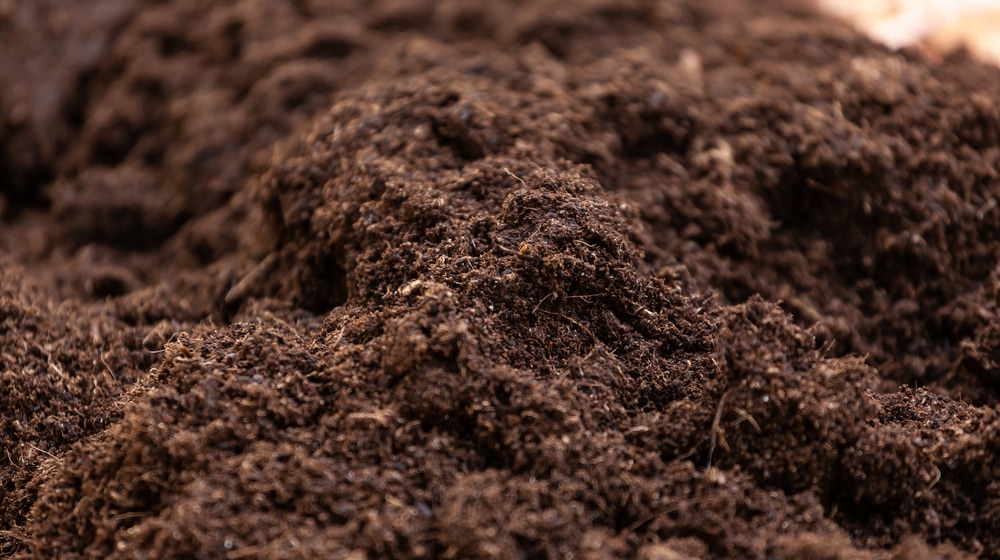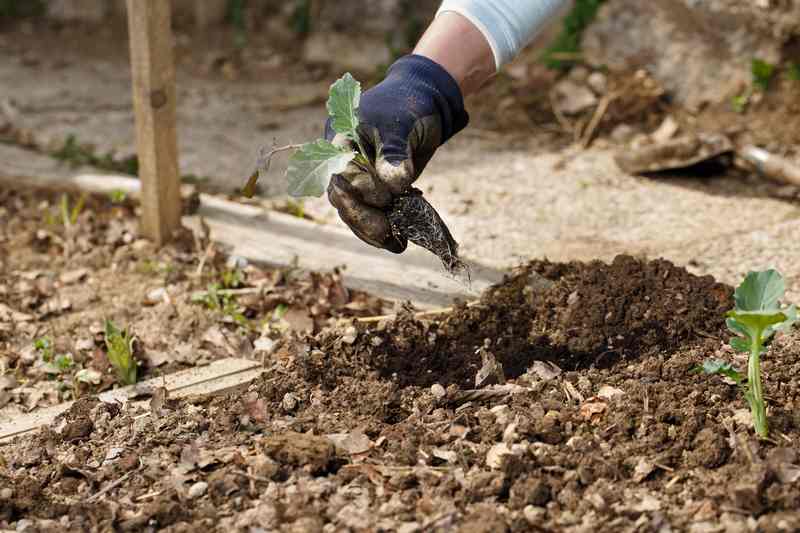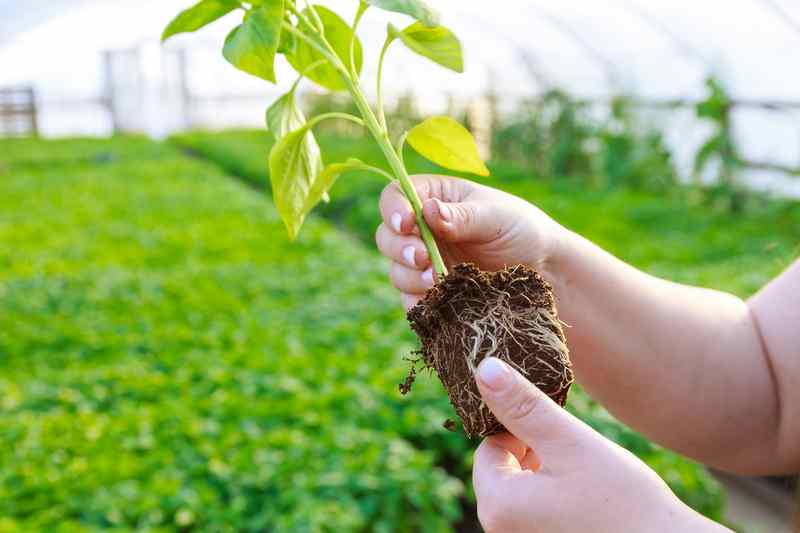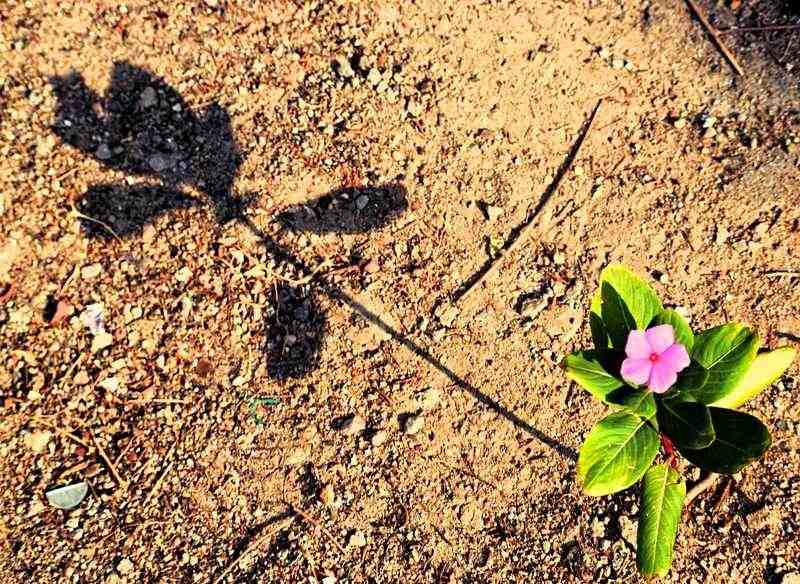
It is always best to read a few gardening books or seek guidance from a local expert as a beginner.
This practice will help you avoid many common mistakes and have more chances of growing a stable garden.
There are also some fantastic platforms online where you can reach out to experts if you’re not comfortable reaching out to a local gardening expert.
A common confusion among beginner gardeners is whether or not they break up roots when planting anything in their garden. So, we will discuss this topic briefly to help you better understand the procedure.
Do You or Do You Not Break Up Roots When Planting?
Even though most people believe that plant roots are fragile, sometimes breaking up roots while moving the plant from a pot to the garden sometimes becomes necessary.
Ideally, you should have some background knowledge about the plant you’re planning on moving to a different location.
If the plant is not exceptionally delicate, breaking up roots shouldn’t be a problem when planting in your garden.
If done correctly, breaking up roots encourages plant growth while also increasing survival chances.
However, you need first to inspect the plant’s root ball. This is to decide whether or not you want to break up roots.
If the roots are entangled in a circle around the potting soil when you take the plant out of the container, you need to prune the roots and break them up before planting.
That way, the roots will grow outwards into the new soil to extract the necessary nutrients from the ground. But if the root ball is left as it is, the roots will keep going into that circular motion, and your plant won’t survive the next few weeks.
So, if the roots are entangled around the potting soil, use a sharp gardening tool or sheers to break up the root ball.
Then you can rough them up and ensure that the plant’s roots are in contact with the new soil.
That way, it will be easier for the roots to adapt to the new environment, and you won’t have to worry about the plant dying due to transplant shock.
Most plants have solid roots. If you’re not too rough with the roots, they will grow properly in the new environment. Ensure that the roots aren’t dry. Also, ensure the new environment can hold sufficient mixture to encourage plant growth.
Breaking up roots while planting them – How common is that?
When planting a tree or shrub, it is important to give the roots enough room to spread out and become established.
Unfortunately, many gardeners make the mistake of not taking root growth into account when planting and end up breaking them during the process.
Breaking up roots can cause damage that may take years for a plant to recover from, so it’s important to know how common this problem is and what you can do to avoid it.
Breaking up of roots while planting occurs more often than most people think.
Studies have shown that almost half of all plants suffer some degree of root damage due to improper handling during their installation in gardens or yards.
If you are not careful with your digging and transplanting techniques, you could seriously harm your plants before they grow.
The best way to prevent broken roots when planting is by being mindful of how much space you leave around each plant’s root system and ensuring proper soil preparation before transplanting.
It also helps if you gently loosen any tangled or matted-down roots before attempting to dig out the plant itself since this will reduce potential breakage points later on down the line.
Always use the appropriate size and type of planting materials for the plant in question to ensure that it has plenty of room to grow.
Try not to move existing plants in mid-season, as this can cause significant root damage due to the shock of being moved.
All in all, broken roots while planting is common but easily avoidable if you take the time and effort to be mindful of your gardening techniques.
With proper preparation and handling, you can ensure that your plants have a healthy start to life.
What happens if I accidentally break the roots while planting?
They are breaking the roots of a plant while planting can be disastrous for its growth and health.
When roots are damaged during planting, they cannot absorb water and nutrients from the soil as efficiently, leading to stunted or even dead plants.
In addition, broken roots can create entry points for disease-causing organisms like fungi and bacteria that can quickly spread throughout the root system.
Root damage also weakens the plant’s overall structure, making it more susceptible to toppling over in strong winds or heavy rain.
To avoid breaking roots when planting, take care when handling seedlings or young plants; use gentle pressure when pushing them into holes dug in soil; and ensure not to leave air pockets around their root systems which would prevent proper contact with moisture-retaining soils.
Furthermore, if you’re transplanting an existing plant from one location to another, try using a shovel or spade instead of your hands so that you don’t accidentally crush any delicate feeder roots while digging up its main root ball.
Taking these precautions will help ensure your newly planted flowers and vegetables have healthy root systems that will allow them to thrive.
If the roots get damaged during the plantation, does that affect the plant’s growth?
Yes, if the roots of a plant are damaged during the planting process, it can significantly impact its growth. Roots are vital to the health and development of any plant, as they provide essential nutrients and water while anchoring the plant in place.
When these roots become damaged or disturbed during planting, it can cause issues with nutrient uptake and root structure that can significantly hinder overall growth. Sometimes, this damage may be too severe for the plant to recover entirely.
To minimize potential damage to roots when planting, gardeners should take great care in handling plants before putting them into the soil.
This includes being mindful of how deep they should be planted so as not to disturb existing root systems or bury them too deeply in the soil where they cannot access adequate oxygen levels for healthy growth.
It is also important to ensure that any added amendments, such as compost, do not come into direct contact with delicate root structures, which could cause further injury or even disease infections over time.
Properly caring for your plants’ roots will help ensure their long-term health and success.
How to tell if the roots got damaged while planting?
Planting trees is a great way to give back to the environment, but it can be tricky. If you don’t take the proper precautions when planting, you could end up damaging roots or other parts of the tree.
This can lead to stunted growth, disease, and even death for your new sapling. Knowing how to tell if roots were damaged during planting is an important part of ensuring that your tree grows healthy and strong.
There are several ways to tell if damage has been done while planting a tree.
You should first look for physical signs like torn or broken root systems or damaged bark on the trunk and branches.
You should also inspect the base of the tree for any exposed roots which may have been pulled out during digging or transplanting.
Another indication of possible damage is if there are visible air pockets in between soil particles near where the root ball was placed into its new home – this means that vital oxygen needed by roots may not be able to reach them properly due to compaction caused by clumsy handling during planting.
Next, watch for any wilting leaves, as this could indicate that water isn’t reaching certain areas of the plant because roots were severed from their source during transplantation.
Finally, check for any signs of disease or fungus which could have been introduced through broken roots and open wounds while planting.
Taking the time to carefully inspect your tree after planting is important to ensure that it grows healthy and strong.
If you suspect there may be root damage, take corrective action immediately, as this will help prevent any further problems.
To Conclude
Breaking up roots can be crucial for a plant’s survival if the root ball is entangled inside a container. To break up the root ball, you can use a set of sharp tools to trim the excess gently.
That will allow plant roots to grow properly in the new environment. Make sure not to pull on the roots and trim the edges neatly.
You need to manage the watering needs, which should help minimize the transplant shock. If done correctly, you will notice maximum efficiency within a few days.





